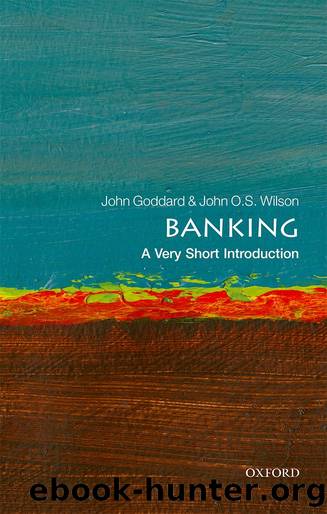Banking: A Very Short Introduction by John Goddard & John O. S. Wilson

Author:John Goddard & John O. S. Wilson [Goddard, John & Wilson, John O. S.]
Language: eng
Format: epub
ISBN: 9780199688920
Publisher: Oxford University Press
Published: 2016-10-03T00:00:00+00:00
Basel I was simple to understand, transparent, and provided incentives for banks to hold highly liquid, low-risk assets. Almost all countries with developed banking systems transposed Basel I into national law. However, Basel I focused solely on the credit risk associated with lending, and ignored other sources of risk. Subsequently amendments required banks to hold capital against market risk. Banks were encouraged to use internal risk-assessment models to measure their exposure to market risk, dependent on the composition of their assets portfolios.
Basel II, launched in 2006, established a three-pillar framework comprising minimum capital requirements (Pillar 1); supervisory review (Pillar 2); and market discipline (Pillar 3). For Pillar 1, the definition of capital remained unchanged, but the risk-weightings reflected credit, market, and operational risk. The calculations relied heavily on the banksâ own internal risk measurement models, and on ratings provided by credit-rating agencies such as Standard & Poorâs, Moodyâs, and Fitch IBCA. Pillar 2 required national supervisors to review the capital adequacy provisions of each bank. Supervisors have the discretion to require banks to hold capital above the minimum regulatory requirements. Pillar 3 requires banks to disclose information regarding risk exposures, capital adequacy, and other material details. It was intended that greater reliance should be placed on market discipline as a constraint on risk-taking behaviour. Forward-looking market-based information embodied in banksâ share and bond prices and ratings can inform supervision, and provide early warning of the need for supervisory intervention.
Basel II was never fully implemented, owing to the onset of the global financial crisis, which exposed weaknesses in capital regulation. Risk-based capital ratios were supposedly superior measures of capital adequacy; but their usefulness was dependent on the accurate measurement of risk. The financial crisis damaged the credibility of the banksâ internal models for risk measurement, damaged the reputations of the credit-rating agencies, and raised doubts about the effectiveness of market discipline as a constraint on risk-taking. Furthermore, Basel II may have amplified the business cycle because it is pro-cyclical. During buoyant economic conditions, risk is perceived to be low and lending tends to increase. Banks extend what ultimately turn out to be poor-quality loans, without accumulating sufficient capital. During a recession, conversely, loan delinquencies deplete capital, while a mood of pessimism suggests capital should be increased. Banks hold insufficient capital to absorb losses, and scramble to improve their capital ratios by reducing lending, leading to credit rationing. Changes to international capital regulation since the global financial crisis are described in Chapter 8.
Download
This site does not store any files on its server. We only index and link to content provided by other sites. Please contact the content providers to delete copyright contents if any and email us, we'll remove relevant links or contents immediately.
Zero to IPO: Over $1 Trillion of Actionable Advice from the World's Most Successful Entrepreneurs by Frederic Kerrest(4068)
Machine Learning at Scale with H2O by Gregory Keys | David Whiting(3644)
Harry Potter and the Goblet Of Fire by J.K. Rowling(3612)
Never by Ken Follett(3535)
Ogilvy on Advertising by David Ogilvy(3340)
Shadow of Night by Deborah Harkness(3177)
The Man Who Died Twice by Richard Osman(2811)
Book of Life by Deborah Harkness(2723)
My Brilliant Friend by Elena Ferrante(2705)
How Proust Can Change Your Life by Alain De Botton(2616)
0041152001443424520 .pdf by Unknown(2599)
Will by Will Smith(2581)
The Tipping Point by Malcolm Gladwell(2563)
How to Pay Zero Taxes, 2018 by Jeff A. Schnepper(2503)
Purple Hibiscus by Chimamanda Ngozi Adichie(2494)
Hooked: A Dark, Contemporary Romance (Never After Series) by Emily McIntire(2424)
Rationality by Steven Pinker(2151)
Borders by unknow(2119)
Daughter of Smoke and Bone by Laini Taylor(2083)
